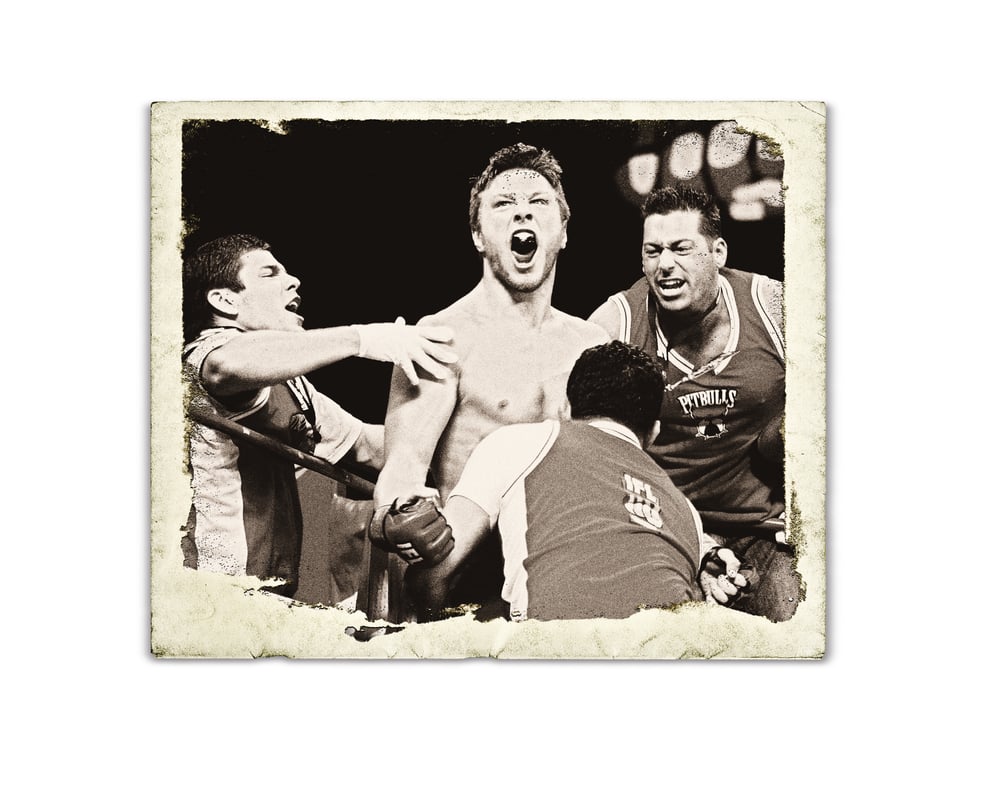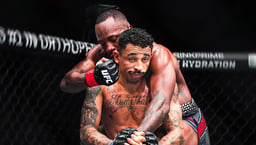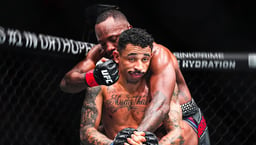
Issue 084
January 2012
The explosive rise and dramatic fall of the International Fight League, which proved once and for all that mixed martial arts is a lonely crusade
INTERNATIONAL FIGHT LEAGUE 2006–2008
Dan Miller snares Dave Phillips in a tight standing guillotine. The fans in the Continental Airlines Arena go wild. When the tap comes, coach Renzo Gracie leaps into the ring to lift Miller in triumph and, all around the ring apron, the red jerseys of the New York Pitbulls join in the celebrations.
Miller’s first-round victory set the Pitbulls on the road to a 3-2 win over the Tokyo Sabres in the 2007 International Fight League semi-final. In the post-match press conference, Renzo was still on a high: “I do believe it’s important to train together. This is a team sport… To fight in front of my home crowd and see familiar faces and friends sitting around was unbelievable. I was in a state of ecstasy. I was really loving and enjoying this special moment.”
Gracie’s Pitbulls would go on to defeat the Quad City Silverbacks to take the IFL Championship.
The International Fight League was the brainchild of Kurt Otto and Gareb Shamus. They set out to create an MMA league based on the team concept. As in other established team sports, the competing outfits would have their own uniforms and logos and would represent geographical areas. Each match would comprise five individual fights in different weight classes with the team scoring the most wins claiming the overall victory.
While the team branding was designed to attract fans of other sports, the IFL brought in high-profile coaches and put on superfights to appeal to MMA devotees. This strategy was apparent in their inaugural event on April 26th 2006 when Pat Miletich’s Silverbacks took on Bas Rutten’s LA Anacondas, Gracie’s Pitbulls faced off against Maurice Smith’s Seattle Tiger Sharks and Jens Pulver headlined in a superfight against Cole Escovedo. Around 3,000 fans showed up at the Trump Taj Mahal in Atlantic City, but most estimates suggest that less than 500 actually paid for tickets.
Financial worries were a running theme of the IFL. The founders were keen to strengthen the notion of the team by signing fighters to season-long contracts with attractive salaries, health insurance and benefits. Although born of admirable intent, these contracts were another unwelcome expense for a start-up which was producing very little in terms of income.

The night the Pitbulls lifted the roof in New Jersey on the way to the 2007 finals was probably the nearest the IFL ever got to realizing its original vision. The close of that year saw the International Fight League Grand Prix events, in which impressive performers from the previous season went head-to-head for individual IFL titles. These belts were to be defended each time the holder competed in the subsequent season.
The team concept was further diluted when the IFL Road Map for 2008 was rolled out. It stated that the “contrived” teams were on their way out, to be replaced by a more fluid system which would see camps compete against one another in matches consisting of three fights. It also stated: “We are open to working with any and all organizations to put the best match-ups together for the fans… If there is a camp that is comprised of athletes from another organization anywhere around the globe and the match-ups make sense, we would welcome them into the IFL for a one-off event.”
The subtext was clear. Randy Couture and Tito Ortiz had both been at loggerheads with the UFC. Implementing a new open-door policy, along with the institution of the championship belts, meant that the IFL were looking to put on the most attractive fights they could with the scraps from the UFC’s table. All of the IFL’s defining features had been trashed. The changes were sold as a return to the roots of MMA, but they were seen as a last ditch attempt to balance the books. It was too little too late; the International Fight League folded mid-2008 and later filed for bankruptcy.
The IFL came up with an innovative take on MMA, put on commendable events and, for a brief period, looked like they were going to be serious players. Ultimately, for all the slick marketing and big ideas, the money ran out before it could be made to work. The events of May 2008 sum up the life of the promotion. The media were warned that a major announcement was on the way and most began writing obituaries in advance of it. Instead of a death notice, they received flashy press releases telling them about the Hex: a new six-sided, five-roped construction that would be used for future IFL events. We were told: “The Hex allows for the larger surface that is utilized in other MMA organizations while still retaining the advantages we have enjoyed with the ring.”
We never got to find out how effective it was as there weren’t any future IFL events. Another bright idea from a company that could never work out how to turn originality and entertainment into dollars and cents.
...









